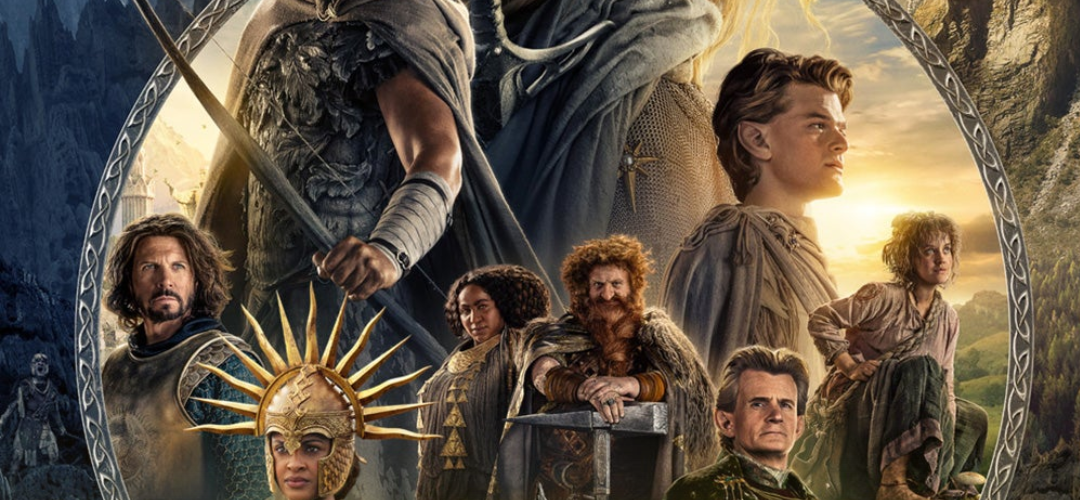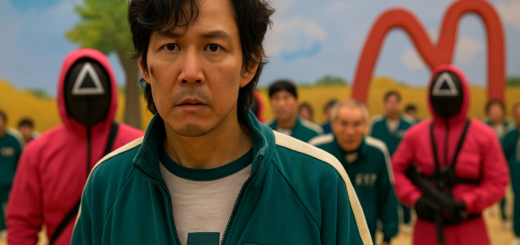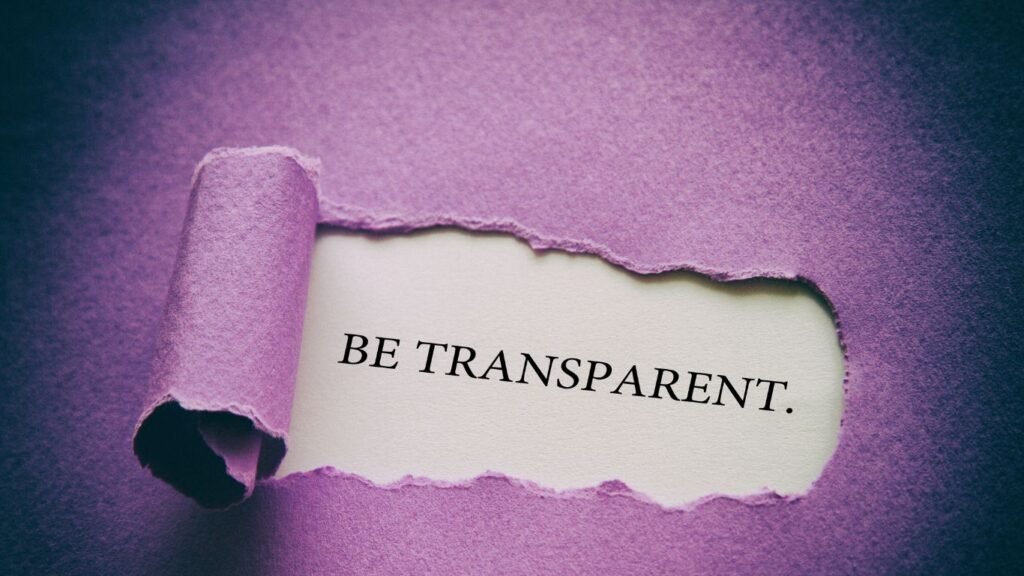The Rings of Power Season 2: A Spectacular Return

The anticipation surrounding the second season of The Lord of the Rings: The Rings of Power has been immense, and for good reason. Touted as the highest-budgeted TV show ever produced, Prime Video’s ambitious project has spared no expense in bringing J.R.R. Tolkien’s legendary world to life. While much of the excitement and intrigue surrounding the show stems from its staggering production values, what truly elevates The Rings of Power is its ability to marry visual spectacle with compelling storytelling.
Season 2 of The Rings of Power offers an experience that not only lives up to the legacy of Tolkien’s work but also provides fresh and thrilling narratives that stand tall alongside the beloved material. From the rich, immersive worldbuilding to the complex character arcs, the show has managed to weave together the threads of Middle-earth’s ancient history with an epic tale that is as engaging as it is visually stunning.
A Visual and Auditory Feast
From the very first episode, it’s clear that The Rings of Power is a visual masterpiece. The show’s budget is evident in every frame, with its sweeping landscapes, intricately designed sets, and meticulous attention to detail. Whether it’s the towering spires of Númenor, the rugged beauty of Khazad-dûm, or the eerie desolation of Rhûn, each location feels like a fully realized world, lived in and steeped in history.
The visual splendor is matched by an equally impressive auditory experience. The score by Bear McCreary, with its nods to Howard Shore’s iconic work on Peter Jackson’s films, enriches the atmosphere, grounding the viewer in the familiar yet expanded universe of Middle-earth. McCreary’s music, combined with Shore’s theme, creates a soundscape that is both evocative and essential, guiding the emotional beats of the story while honoring the musical legacy that fans cherish.
Building on a Legacy
One of the significant challenges for showrunners J.D. Payne and Patrick McKay was to create a story that would satisfy both die-hard Tolkien fans and newcomers to the lore. By the second season, it’s evident that Payne and McKay have successfully walked this tightrope, crafting a narrative that is both respectful of Tolkien’s worldbuilding and daring in its innovations.
Season 2 begins with a bold move: an origin story for Sauron that blends horror elements with epic fantasy. This opening sequence is a testament to the creative risks the show is willing to take. It plunges the viewer into the darker corners of Middle-earth, exploring the fall of Morgoth and Sauron’s subsequent rise to power. Charlie Vickers delivers a chilling performance as Sauron, adding layers to a character often viewed as a one-dimensional embodiment of evil. His scenes with Galadriel, played with intensity by Morfydd Clark, are among the season’s highlights, offering a deep dive into the psychology of Middle-earth’s greatest villain.
Galadriel’s Quest and Character Evolution
Galadriel’s journey is central to the narrative, and in Season 2, we see a more nuanced portrayal of the Elven warrior. Gone is the single-minded determination of the first season, replaced by a character grappling with the consequences of her actions. Galadriel’s desperation to undo the mistake of unknowingly aiding Sauron adds depth to her character, making her more relatable and human. Her interactions with Elrond (Robert Aramayo) and Celebrimbor (Charles Edwards) are pivotal, as they explore the ethical dilemmas and political intrigue surrounding the creation of the Rings of Power.
These relationships are key to understanding the broader stakes of the show. As Galadriel races against time to prevent Sauron’s plans from coming to fruition, the tension mounts, and the viewer is drawn into the intricate web of alliances and betrayals that define this period of Middle-earth’s history.
Expanding the World of Middle-earth
One of the strengths of The Rings of Power is its ability to expand on the world Tolkien created while remaining true to its spirit. The show introduces new characters and regions, providing fresh perspectives on the familiar lore. The inclusion of characters like the enigmatic “Stranger” (Daniel Weyman) and the Elf soldier Arondir (Ismael Cruz Córdova) adds diversity and richness to the narrative, keeping the audience engaged with unexpected developments.
The political turmoil in Númenor and Khazad-dûm provides a backdrop of tension and foreboding. These subplots are not mere filler; they are integral to the story’s larger themes of power, corruption, and destiny. The depiction of Númenor, in particular, is visually stunning and narratively compelling, as it foreshadows the island’s eventual downfall and the rise of men who will shape Middle-earth’s future.
A Story for the Ages
The beauty of The Rings of Power lies in its ability to balance epic battles with personal stories. The show doesn’t shy away from the grand spectacle — the battles between Elves and Orcs are as thrilling and visually impressive as one would expect from a production of this scale. But what makes these scenes truly impactful is the emotional weight behind them. Characters are not just fighting for survival; they are fighting for their beliefs, their loved ones, and their very souls.
The inclusion of fan-favorite elements, such as the Ents and their elusive Entwives, adds a layer of nostalgia for long-time Tolkien fans, while the introduction of new concepts and characters keeps the story fresh and unpredictable. The series is aware of its roots in Tolkien’s work but isn’t afraid to branch out and explore new territory.
The Harfoots and the Stranger
One of the few criticisms of the first season was the relative sidelining of the Harfoots, ancestors of the Hobbits. In Season 2, their storyline gains more prominence, particularly through the character of Nori (Markella Kavenagh) and her interactions with the Stranger. The Harfoots’ journey is a reminder of the small yet significant roles that individuals can play in the grand tapestry of history. Their scenes provide a welcome contrast to the high-stakes drama unfolding elsewhere, grounding the series in the simple joys and challenges of everyday life.
The Stranger’s quest for identity and purpose adds a layer of mystery to the narrative. His connection to the broader events in Middle-earth is slowly revealed, and his journey alongside Nori offers some of the season’s most touching moments. The dynamic between the two characters is a testament to the show’s ability to create meaningful relationships, even in the midst of epic conflict.
Crafting Middle-earth
The craftsmanship behind The Rings of Power is nothing short of extraordinary. From the detailed costumes to the elaborate set designs, every aspect of the show is meticulously crafted to transport viewers to Tolkien’s world. The Elven armor, the Dwarvish architecture, and the Orcish weaponry all contribute to a sense of authenticity that is crucial to the show’s success.
The visual effects, while occasionally showing signs of the limitations of CGI, are generally impressive and help bring the fantastical elements of Middle-earth to life. The show’s creators have clearly taken great care to ensure that the visual experience matches the grandeur of the story being told.
A Tale for All Ages
The Rings of Power Season 2 is not without its flaws — there are moments where the pacing lags, and certain subplots may not appeal to all viewers. However, these are minor quibbles in the grand scheme of things. For fans of Tolkien’s work, the series offers a rich, immersive experience that honors the source material while also carving out its own place in the pantheon of great fantasy television.
The show’s ability to balance the epic with the intimate, the familiar with the new, makes it a worthy successor to the legacy of The Lord of the Rings. Whether you’re drawn in by the stunning visuals, the complex characters, or the epic battles, there’s something in The Rings of Power for everyone. It’s a show that invites viewers to return to Middle-earth, to explore its hidden corners, and to lose themselves in its timeless stories.
In conclusion, The Rings of Power is a triumph of storytelling and production. It’s a series that understands the weight of its legacy but is not afraid to forge its own path. For anyone who loves Tolkien’s world, it’s a must-watch, offering a banquet for the eyes, ears, and heart. As we await further seasons, it’s clear that The Rings of Power has firmly established itself as a cornerstone of modern fantasy television, and its journey through Middle-earth is far from over.













